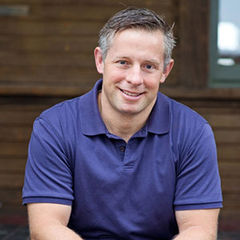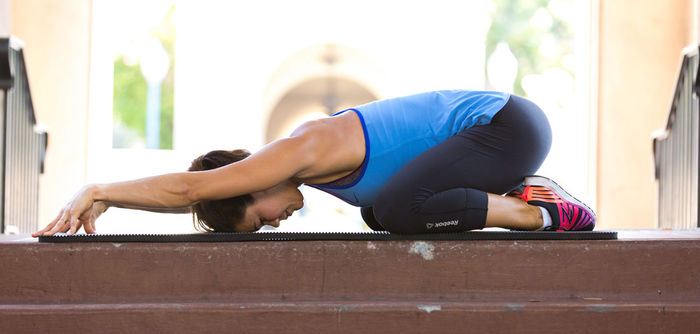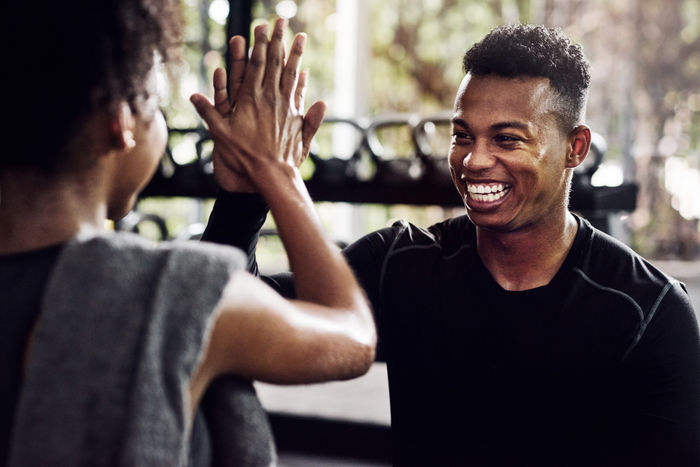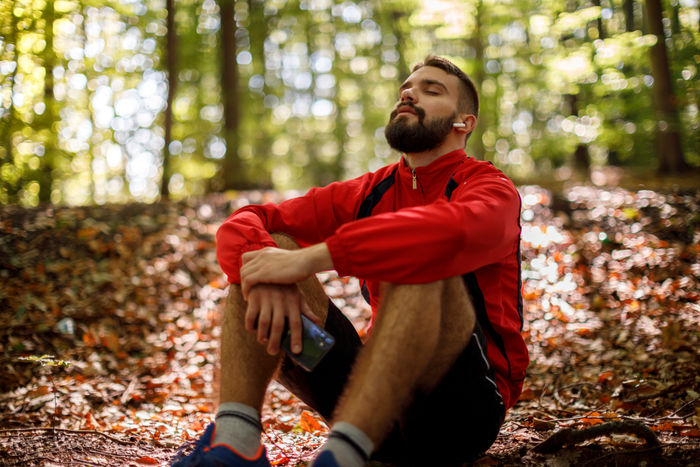One of the most common ways to learn how to exercise in a gym is by watching others go through their workouts. I’m sure most of us, at one time or another, have tried an exercise after watching someone else perform the movement. But just because someone with a buff body is doing an exercise does not mean that particular exercise is effective. In fact, there are many exercises that seem to be producing a desired outcome, yet aren’t really creating a beneficial physiological response. If you’re doing certain exercises because you saw other gym goers do them, you might want to consider trying these exercises instead:
If you want to work your chest…
Instead of This: Standing Chest Flys With Dumbbells

Do This: Lying Flys

When the goal is to strengthen the chest muscles, the load should be placed directly into the pectoralis major and minor, as is the case with push-ups, the bench press, pec-deck machine, or flys with dumbbells or cables. This is because the pull of resistance is lined up directly with the muscles, so when they shorten they are generating the greatest amount of force to move the shoulder joint. When doing chest flys while standing and holding dumbbells, the deltoid muscles of the shoulder are doing most of the work, while the pectoralis major or minor act as secondary muscles, which makes it more of a shoulder exercise than a chest exercise. If an instructor has you doing this exercise and says it’s for your shoulders, however, that’s fine.
If you want to work your glutes…
Instead of This: Wall Sit
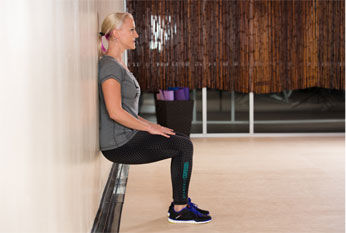
Do This: Glute Bridge

The purpose of squats is to strengthen and tone the muscles of the butt, thighs and hips. The most effective way to strengthen a muscle and develop definition is to take it through a full range of motion (ROM), which includes lengthening as well as shortening the involved muscle fibers. During a wall sit, an exercise featuring an isometric (non-moving) contraction, muscles are shortening, but they are not making the transition from lengthening to shortening because only a finite amount of muscle fibers are engaged. Compare that to an exercise like a regular squat where the muscles transition from lengthening to shortening through a complete ROM, which covers much more distance and allows more work to be completed. A wall sit makes you feel like your muscles are burning, but that is because they are holding static, non-moving contractions. The actual strength benefits, however, are minimal. The glute bridge is a better option because they take the hips through a full ROM. The benefit of lying on the ground is that it focuses the work on the hip extensor muscles of the glutes, hamstrings and adductors.
If you want to work your inner thighs…
Instead of This: Plié Squats

Do This: Lunges

Plié squats are often done to create the perception of working the adductor muscles of the inner thigh. When the feet are in a plié position, the hips are in external rotation, which does lengthen the adductor muscles of the inner thigh. Holding this position tricks you into feeling your inner thigh because those muscles are being stretched during the motion. However, just because you feel a stretch doesn’t mean those muscles are doing more work. Understanding how a muscle works during gait can help us determine the best way to train that muscle with exercise. The adductor muscles of the inner thigh are responsible for creating hip flexion and extension during gait. They can bring the leg closer to the midline of the body (adduction), but should be trained with exercises that emphasize extension and flexion of the hip to help prepare the muscles for the forces they experience during normal movement patterns. Plié squats won’t necessarily increase your risk of injury, but they don’t provide the best option for training the adductor muscles. Don’t be fooled—if you really want to strengthen and tone your inner thigh muscles, do single leg step-ups, lunges or single-leg squats to engage all of the hip muscles.
If you want to work your inner and outer thighs…
Instead of This: Lying Inner/Outer Thigh Leg Lifts


Do This: Ice Skaters

Lying on your side and lifting your legs off of the ground can help you feel like you’re using the muscles of the inner and outer thigh, but this is not the case. Again, we need to understand how these muscles actually function during gait to determine the most effective way to use them during exercise. Traditional anatomy teaches that the muscles of the outer thigh work to move the leg away from the midline of the body. However, during the gait cycle the muscles that move the leg away from the body actually work to stabilize the body when you’re standing on one leg. For example, when you’re walking, your right outer-thigh muscles stabilize your body when you are balancing on your right leg and your left leg is swinging through the air. The most effective way to strengthen your outer-thigh muscles is to do single-leg exercises like step-ups, lunges or ice-skater (lateral) bounds. While leg lifts are unlikely to cause an injury, they are not the best use of your limited exercise time.
If you want to work your abs…
Instead of This: Frog Leg Crunch

Do This: Medicine Ball Chops

The idea behind frog-leg crunches is that placing the hips in an abducted position (with the upper thighs and knees touching the floor) will recruit the lower abs. The standard crunch involves using the abdominal muscles to roll the rib cage toward the pelvis, which can strengthen these muscles, but does not train them the way they are actually used during upright movement patterns. If your ab muscles were really responsible for flexing your spine, you would walk around bending forward every time your foot hit the ground. During gait, the six-pack muscle of the rectus abdominis is involved in decelerating the anterior (forward) rotation of the pelvis, while the external obliques are responsible for assisting with rotation of the trunk. While lying on the floor to train the abs can create the perception of muscle involvement and can be useful for individuals training for specific appearance-based goals, if you want to train your body the way it was actually designed to function, then consider training your core from a standing position. Medicine ball chops, for example, involve the muscles of the hips, thighs, back and shoulder, which can all be considered core muscles because of their attachments to the spine and pelvis. Start with the medicine ball near the right hip, sink into a quarter squat, and then use the hips and arms together to push the ball overhead before bringing it down to the left hip; alternate from side to side.
If you want to work your calves…
Instead of This: Toe Raises

Do This: The Heisman

Standard toe raises are great for strengthening and toning the calves because this exercise focuses on the concentric action of muscle shortening, which can increase size and definition. However, the function of the calf muscles during dynamic movements such as walking, running or jumping is to help decelerate the force of the body hitting the ground. As a result, the calves can experience extremely large lengthening forces. This means that exercises that focus on the shortening action of the muscles do not adequately prepare the muscles for the forces they frequently experience. Toe raises can make a calf stronger, but this exercise also increases muscle tightness, which can be a liability during explosive movements when the calves are required to rapidly lengthen as the foot hits the ground. In addition, people who wear shoes with an elevated heel keep their calves in a shortened position all day. Doing additional exercises to shorten the muscle could lead to a muscle imbalance along with potential knee or hip soreness. If you want to strengthen and tone your calves, adding sprints or agility drills to your workouts, such as the Heisman, are better options.
If you only have a limited amount of time to exercise, it’s worth taking the time to take a close look at your exercise selection and focus on the ones that will provide the greatest benefits. If you have any questions about how to perform these exercises, consider investing in a few training sessions with an ACE Certified Personal Trainer who can provide the guidance you need to meet your fitness goals in the shortest amount of time possible.




 by
by 
